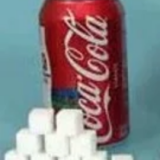Email: info@westonefamilydental.com
Call us
Address:
1104 West Colorado Ave. Colorado Springs. Colorado 80904
Helping Your Kids See Hidden Sugars in Their Food
We’re so glad you’re back for our next week in our series for Kid’s Oral Health! Hopefully, the other blogs in this series have helped start conversations with your kids about how they can take care of their teeth. One of the best ways to keep sugar off your teeth is to not eat it at all. What’s hard about that is, some foods that you may not expect are actually full of sugar! Today we will help you show your kids how many hidden sugars are in their favorite foods.
Investigative work
If you’ve never talked with your kids about nutrition labels, now is a great time! They have a lot of helpful information to empower your kids to make healthy eating choices. Even if your kids can’t read yet, you can discuss nutrition labels during meals to begin building concepts. Make sure you remind them to look at the serving size, which isn’t always reasonable. For example, many ice creams list the serving size as 1/2 cup- as in less than one scoop!
For today, we’re going to focus in on the Total Sugars line underneath the Total Carbohydrate heading.
Compare
Pull out your kids’ favorite snacks and drinks and compare the labels. If the food doesn’t have a label, like produce, you can
find fairly accurate nutrition information here. Spend some time comparing different snack choices. Let your kids make a hypothesis (prediction, guess) which snacks are better for them, then check the facts and see if they were right.
The University of Pittsburg Medical Center has compared some match-ups to show that sometimes foods can surprise you.

Visualize Hidden Sugars
It’s important to give kids a visual because large numbers are hard for them to understand. Also, they (and honestly most adults) have no concept of what 1 gram of sugar actually looks like. Using the foods you have out, check out how many grams of sugar are in each. To turn grams into teaspoons, you can divide the number of grams by 4.
For example, a 12 oz of a leading dark soda has 39 grams of sugar.
39 grams ÷ 4 = 9.75 tsp of sugar.
Take the time to measure out the sugar, preferably in clear, narrow cups to help compare different snacks and treats. Alternatively, if you have sugar cubes, you can stack sugar cubes in towers or pyramids like they have here at Calorie Bee.


Discuss
After you’ve had a chance to visually see how some foods, especially drinks, can hide sugars, talk about healthy eating options.
Ask them:
- Which makes you feel more full, a bunch of grapes or a glass of juice?
- If you don’t feel full after a snack, what will you most likely do next?
- Does what you eat have an impact on how much sugar ends up on your teeth?
We hope this has been helpful and eye-opening, even for you, the parents! We are happy to be a partner in educating you and your children in proper oral health care. Stay tuned next week for our final blog in the series.
The post Helping Your Kids See Hidden Sugars in Their Food appeared first on West One Family Dental.
Business Hours
- Mon - Thu
- -
- Friday
- -
- Sat - Sun
- Closed





